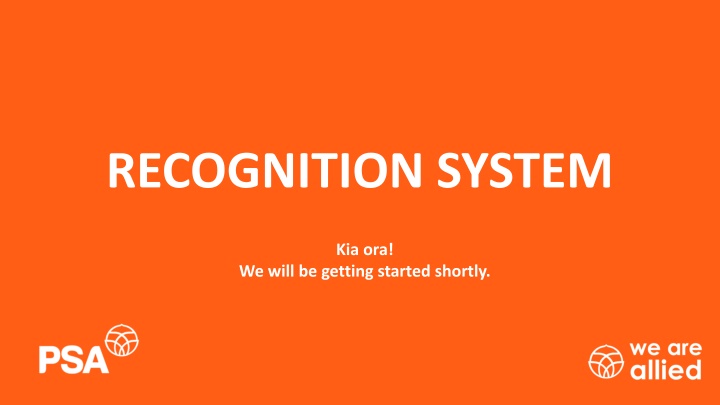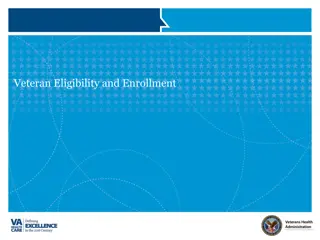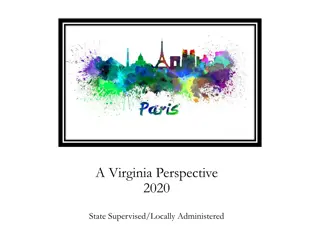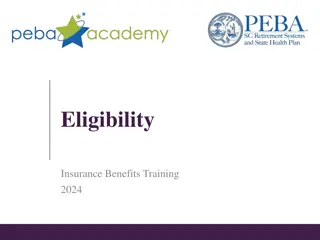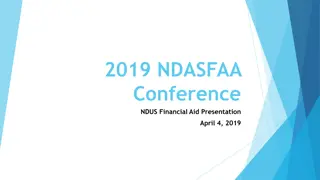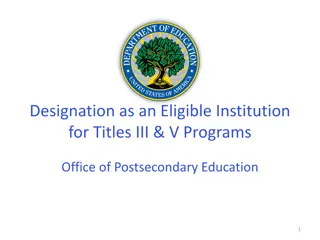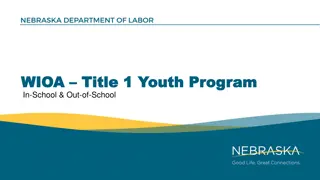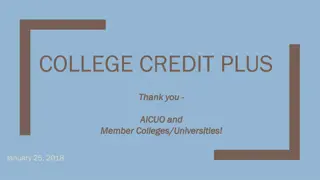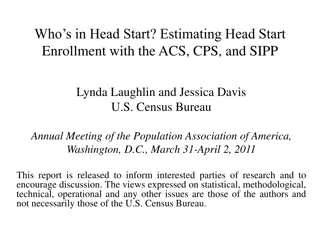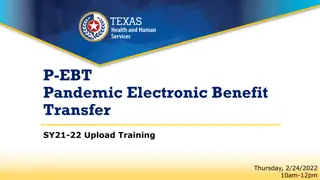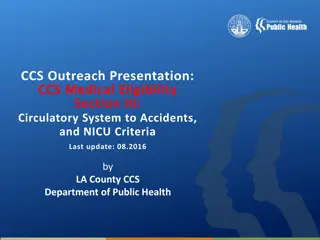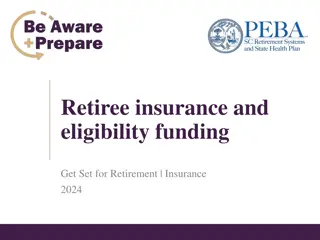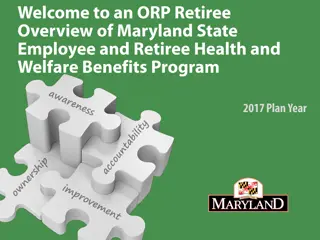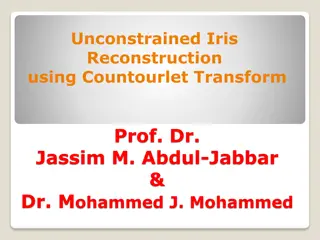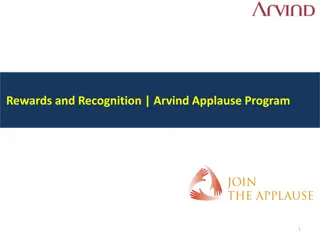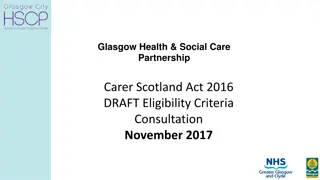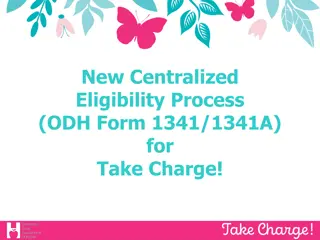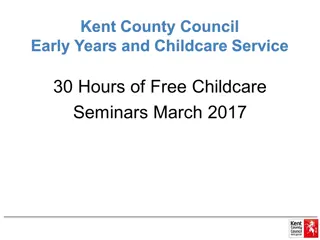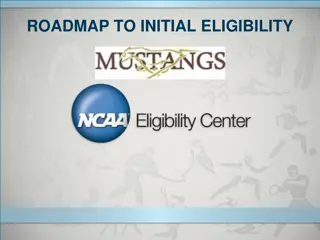Recognition System and Criteria for Eligibility Overview
The Recognition System outlines steps and progression based on a degree scale, with details on salary increments and additional progression. Background information includes outcomes of surveys and identified issues such as discrimination and inequities. The new system principles focus on accessibility, flexibility, and fostering growth. Eligibility criteria involve demonstrating excellence, leadership, and satisfactory performance appraisal.
Download Presentation

Please find below an Image/Link to download the presentation.
The content on the website is provided AS IS for your information and personal use only. It may not be sold, licensed, or shared on other websites without obtaining consent from the author.If you encounter any issues during the download, it is possible that the publisher has removed the file from their server.
You are allowed to download the files provided on this website for personal or commercial use, subject to the condition that they are used lawfully. All files are the property of their respective owners.
The content on the website is provided AS IS for your information and personal use only. It may not be sold, licensed, or shared on other websites without obtaining consent from the author.
E N D
Presentation Transcript
RECOGNITION SYSTEM Kia ora! We will be getting started shortly.
Recognition system Step 9 & 10 of Degree Based scale. Designated Step F4 Step 4 Sept 23 2 Sept 24 Recognition Step 10 $113,000 $116,390 Recognition Step 9 $110,000 $113,300 Additional Progression Step 8 $107,000 $110,210 Step 7 $104,466 $107,600 Step 6 $101,741 $104,794 Step 5 $97,246 $100,163 Step 4 $91,644 $94,394 Step 3 $86,045 $88,627 Step 2 $80,442 $82,856 Step 1 $74,842 $77,087
Background CASP Early 2023: survey of PSA members. 2373 responses. Results of survey explored in six focus groups. Members surveyed on: Completion rates. Positive/negative experience of CASP. Perceived inequities/barriers to accessing CASP. Does CASP support genuine advancement based on merit? Ideas for reform
Background Outcomes: Discrimination against women with caregiving responsibilities. Inequities for M ori. Arbitrary barriers region, role, team, Manager. Other issues identified: Workload. Transparency. Difference with similar occupations (Nursing). Support for some kind of Merit system and belief that it could be made fair. Key theme: the most important factor in a positive/negative experience was time.
New system - principles Reasonable to access and complete time, equity, approval etc. Flexibility. What works for the member and the service? National consistency. Recognises the natural specialisation that many members undertake. Enhances service delivery. Fosters continued development and growth.
Criteria for eligibility (degree based) Can be initiated as soon as they are on the qualifying step (eg. Step 8 to initiate progression to Step 9) Must have been on qualifying step for a year before progressing. Can complete process in less than a year, but can t progress until anniversary. If they have been on the qualifying step for over a year, they can move up a step immediately upon completion of the recognition process.
Criteria for eligibility (degree based) Member must demonstrate excellence, leadership and/or specialist skills and knowledge in contribution to service. Principle of flexibility if the service/manager recognises this, then the criteria is met. Satisfactory performance appraisal in last 12 months. Undertaking clinical work at level expected in GEPP. Recognised as contributing to organisation, team, service, locality etc.
How does it work? The GEPP Allied Health Guidelines for Expectations of Professional Practice Measures professional growth and competence of APHST professionals. Already in use. Made up of: Growth rings: measure development over time. Domains: measure development in specific competencies. Objectives: task based measurement of development within domains.
How does it work? The GEPP GROWTH RINGS Domain Gaining experience Consolidating knowledge and skills Further developing knowledge and skills Becoming expert Acknowledged leader Professional & Clinical Practice Teaching & Learning Evaluation & Research Leadership & Management Quality & Service Improvement OBJECTIVES Communication Personal & People Health Safety & Security/Risk Te Tiriti, Bicultural Safety & Equity Equality, Diversity & Cultural Safety.
How does it work? Select and complete objectives across no fewer than two domains. Te Tiriti principles and cultural safety must be woven into the objectives. For Recognition Step 9: Objectives chosen from the Further Developing Knowledge and Skills growth ring, or higher. For Recognition Step 10: Objectives chosen from Becoming Expert growth ring, or higher. For Step DF4: Objectives chosen from Acknowledged Leader growth ring, and one objective must be from the Leadership and Managemnet domain.
How does it work? There is no set number of objectives (minimum is 2). Decision between member and Manager about what is reasonable, and contributes to service. Eg. Could be one big project, could be multiple smaller ones. Previous work may be considered as part of the recognition process, but: It must have been done within a reasonable timeframe prior to the initiation of the recognition process. It must have continued relevance to the service. The member will need to show some kind of additional development or improvement on this work as part of the process.
Example: An AOD Clinician wants to progress to Recognition step 9. For the last few years, they have developed specialist expertise on working with queer youth with addictions. They want to incorporate this natural specialisation into their progression step. They choose the following objectives: Evaluation & Research: Completes critical literature review to effect change in practice implementation and/or service. They complete a literature review on existing theory and practices on support/counselling queer clients. Te Tiriti O Waitangi, Bicultural Safety and Equity: Accesses M ori consultation for design and development of services. They arrange consultation with M ori clients, iwi and takatapui advocates to co-design culturally safe and responsive services. Teaching and Learning: Provides teaching locally within profession Their team leader supports them to deliver a presentation in a staff meeting about what they have learned and implemented in their work as a result of their previous two objectives.
Example: GROWTH RINGS Domain Gaining experience Consolidating knowledge and skills Further developing knowledge and skills Becoming expert Acknowledged leader Professional & Clinical Practice Teaching & Learning Completes critical literature review to effect change in practice implementation and/or service. Evaluation & Research Leadership & Management Quality & Service Improvement Communication Provides teaching locally within profession. Personal & People Health Safety & Security/Risk Accesses M ori consultation for design and development of services. Te Tiriti, Bicultural Safety & Equity Equality, Diversity & Cultural Safety.
Other information: Where reasonable and agreed, the employer will support the employee to progress their objectives during work time. The employee is responsible for initiating the conversation about their recognition process. The objective setting process must conclude no later than three months of the employee requesting the meeting. We encourage the discussion and setting of objectives to occur in conjunction with performance reviews. The setting of objectives should also include agreement on the criteria for sign off/approval. Additional reviews/check ins can be agreed between the employer and manager where appropriate. If the employee and manager cannot agree on the recognition process, the employee has the right to escalate to their union. The manager is responsible for signing off on completed objectives.
Core principles Reasonable to access and complete time, equity, approval etc. Flexibility. What works for the member and the service? National consistency. Recognises the natural specialisation that many members undertake. Enhances service delivery. Fosters continued development and growth.
Challenges: How do we ensure national consistency? How do we enforce principles? How do we ensure integration of Te Tiriti o Waitangi? Other?
